Toyota’s tried and true LandCruiser 70 Series, which comes exclusively with the powerful 4.5L V8 turbodiesel engine, has certainly been around the block and earned its stripes as a tough, reliable work horse. The ‘luxury’ wagon version, the GXL 76, has been in CTA’s hands for a few months, so we’ve had the chance to see whether this 25-year-old formula cuts still cuts the mustard as a hard-working offroader and tow truck.
The LandCruiser 76 had never been sold in Australia before this TDV8 iteration, but it’s the same basic platform as the familiar 79 Series ute and 78 Series Troop Carrier sold here since 1984. These two models get the same update features as the 76 Series, such as front sheet metal, mechanical changes and the V8 engine.
ATTRIBUTES
The LandCruiser GXL is the top of the range in the 76 Series, although what is considered top-of-the-range equipment in this vehicle is probably the bare basics in anything else. Above the entry-level Workmate 76 wagon, the GXL has floor carpet, cloth seats and cloth door trims, power windows, over-fender flares, power antenna, front fog lights, alloy wheels, keyless central locking and a CD player with MP3 and Bluetooth compatibility and phone connectivity. ABS brakes, driver and front passenger airbags, tilt-adjust steering wheel, comprehensive instruments (including voltmeter and oil pressure gauges), a snorkel and an engine immobiliser are standard across the range.
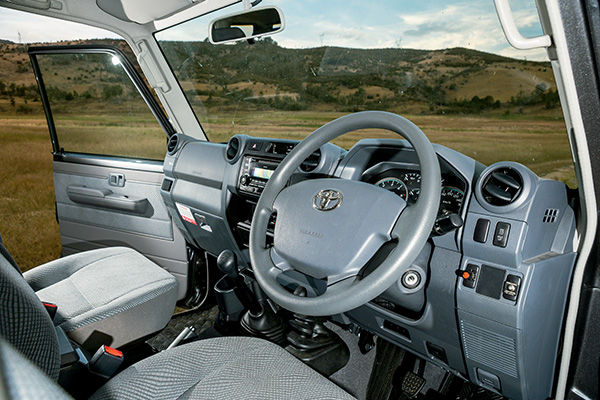


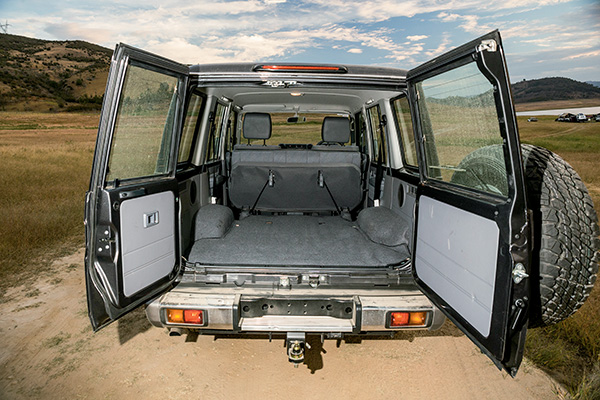
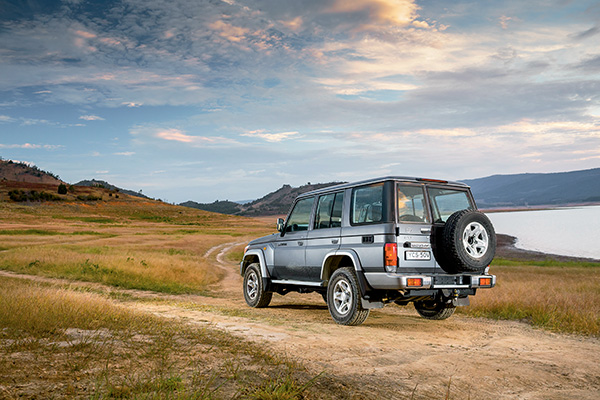
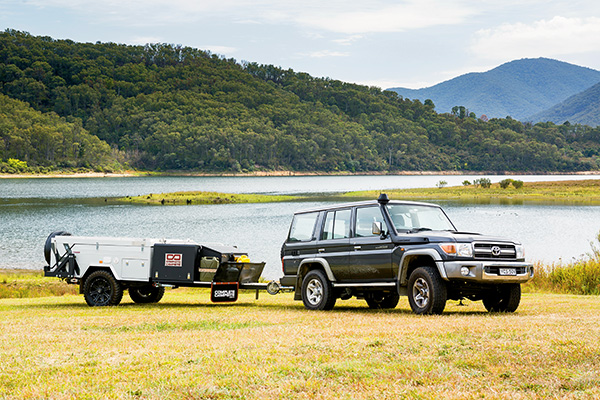

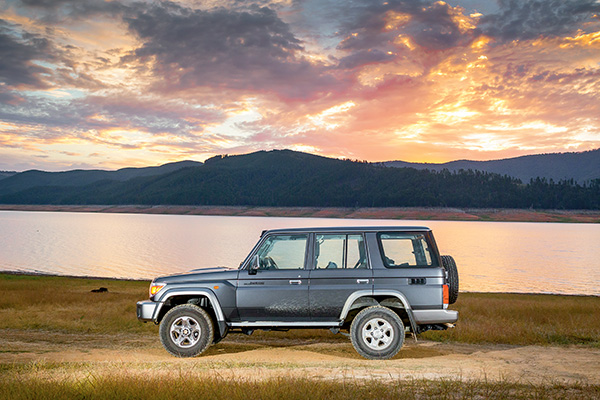

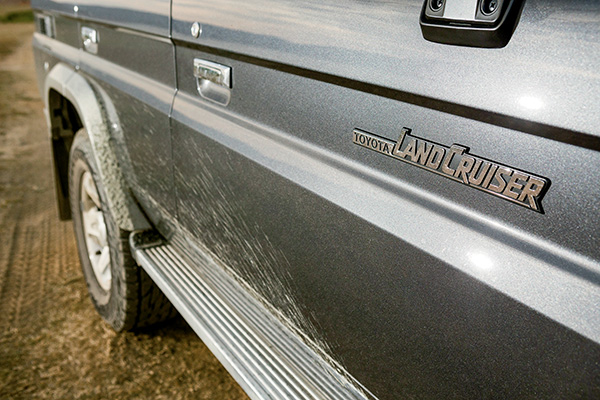
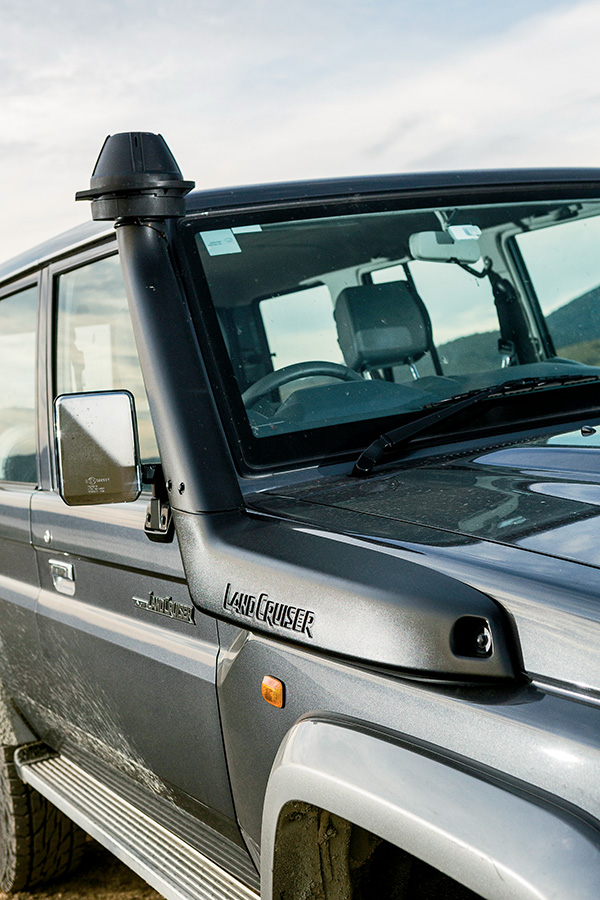
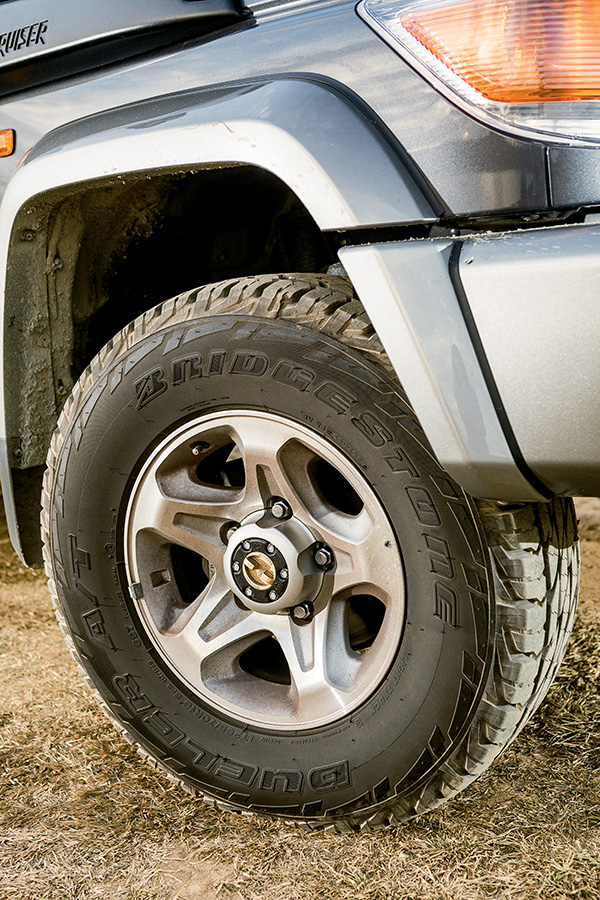
All LandCruiser 70 Series models are fitted with a TD V8 and five-speed manual gearbox only, and a part-time 4WD system.
The GXL’s price starts at $61,990 and, from 2012, has come standard with differential locks and a larger fuel tank at 130L, previously 90L. Air-conditioning and metallic paint are optional, while cruise control and power exterior mirrors are not available.
ENGINE AND TRANSMISSION
The Toyota 1VD-FTE V8 turbodiesel engine first appeared in the 76 LandCruiser, although it is now also fitted in the LandCruiser 200 Series, albeit with a twin-turbo setup (and more power and torque) in the 200 rather than the single turbo fitted to the 76 Series.
The 1VD-FTE features a graphite iron engine block, for strength and light weight, and alloy heads are fitted with four valves per cylinder actuated by two camshafts per cylinder bank. The electronically controlled injection system is the now familiar common-rail design, with a single variable-nozzle vane turbocharger fed by a top-mounted air-to-air intercooler.
Even though the specific outputs are pretty good, there are smaller-displacement turbodiesels catching up with the TDV8 – the Pajero 3.2 DI-D has a four-cylinder turbodiesel with 11Nm more torque and only 4kW less power than the V8 LandCruiser.
When driven at lower speeds – under 80km/h – this engine is as tractable as they come. It will pull like a train in any gear, and makes redundant two out of the five forward speeds. While we wouldn’t recommend it as common practice, the V8 will put up with a second-gear start, and you could miss third gear altogether and go to fourth, and the engine won’t complain. There are not many engines, even the modern, flexible, torquey ones, which will do that as easily as the 1VD-FTE. Turbo lag is next to nonexistent, and with the engine’s big wad of low to mid-range torque, you just need to brush the accelerator a little more and the LandCruiser responds instantly.
SUSPENSION
With its live axles, front coil springs and rear leaf springs, the LandCruiser 76 isn’t the latest word for good ride and handling but it’s not bad. When unladen, though, this commercial vehicle-based platform shows its origins and becomes quite fidgety and uncomfortable on rough roads. Even though most potholes and sharp bumps are absorbed without unsettling the LandCruiser dramatically, on corrugations the interior seems like an echo chamber compared with the much quieter Patrol.
The high seating position in the Toyota makes it feel much taller on the road as well, so it subjectively feels as though it has more body roll while cornering and requires more caution than the typical 4WD wagon. The steering has good feel for what is a rather basic recirculating ball setup.
ECONOMY
According to Toyota the LandCruiser achieves a combined city/country fuel figure of 11.9L/100km. Driving solo we achieved 12.9L/100km, and 15L/100km when towing a 1943kg Tare tandem-axle caravan.
TOWING
The ’Cruiser dropped about 25mm at the rear and rose 7.5mm at the front when we hitched up the van with a 144kg ball load.
Starting off with the van behind, performance was almost the same as with no van behind. The engine seems to thrive on having a load placed on it, at least at low speeds. Quite responsive and relaxed, it feels like a natural for towing.
Yet, on one of our test inclines, the LandCruiser seemed to run out of puff very quickly. On the flats, it motored along very easily in fifth gear but, when we arrived at the base of the climb, it dropped speed quite quickly, and was soon down to third gear and 55km/h (flat-out at one stage).
It should not be any surprise really, as the LandCruiser’s throttle response is not as impressive at speed, even without a load on board. Engine braking down the hills is very good but somehow not the outstanding compression braking we expected from a diesel V8.
Stability was not a problem, but neither did we expect it to be with such a light ball load. The van felt quite planted at the back.
Toyota recommends use of a load leveller when towing more than 750kg.
THE WRAP UP
The LandCruiser 76 Series is a curious mix of new and old, much like the Land Rover Defender where you will either appreciate its old-school approach or not. It’s as tough as nails and the V8 has fantastic pulling power, but the body and suspension are well past it in sophistication and the 76 Series is expensive. No cruise control is a substantial negative for a modern towing rig, and while its sense of toughness and impressive offroadability are major assets, you would need to use them to justify the rest of the package.
Check out the full review in issue #89 June 2015 of Camper Trailer Australia magazine.




